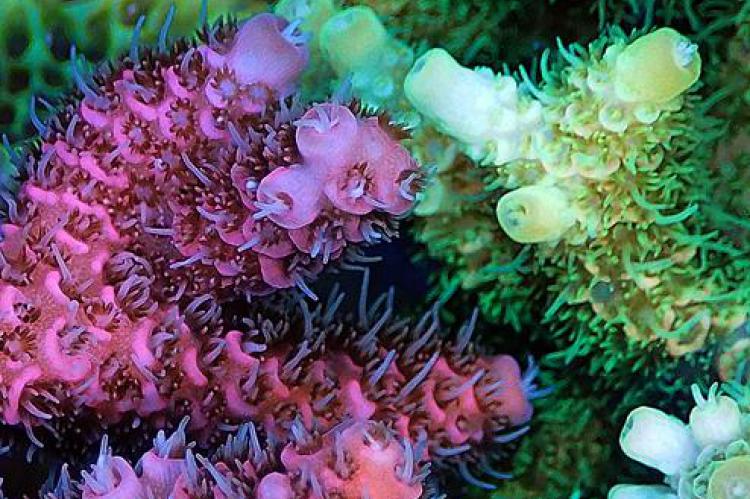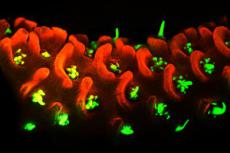How corals control their colour
Corals use multiple copies of the same gene to control pigment production. Depending on how many genes are active, the corals will become more or less colourful.
Using the staghorn coral Acropora millepora as a model, scientists from the University of Southampton have found that the fluorescent pigments that are mostly responsible for coral colours act as sunscreens for the symbiotic algae that live in the coral tissue. These alga require light to produce sugars, which they can contribute to the nutrition of the corals in return for the shelter and the supply of nutrients that are provided by the coral host.
However, the enhanced protection comes at a cost and the corals need to allocate substantial energy reserves to accumulate the high amounts of protein pigments that are characteristically found in brightly coloured corals. This energy might be divided away from other important processes, potentially resulting in reduced growth rates or lower numbers of offspring. Therefore, being brightly colour might not be a good investment for corals settling in less light exposed parts of the reefs.
It was one of the longstanding mysteries of coral reef biology - why sometimes individuals of the same coral species can show such dramatic differences in their colour, despite sitting side-by-side on the reef and being exposed to the same environmental conditions.
The key finding is that these so-called 'colour morphs' do not use just one single gene to control the pigment production, but multiple identical copies thereof.
Dr Jörg Wiedenmann, Professor of Biological Oceanography and Head of the University's Coral Reef Laboratory
Colour morphs resulting from high-level expression of differently coloured proteins are not restricted to scleractinian corals, but are frequently found among other anthozoan taxa. Their pigments are rather remotely related suggesting that colour polymorphism has evolved multiple times in the different lineages and may represent a common adaptation strategy.



